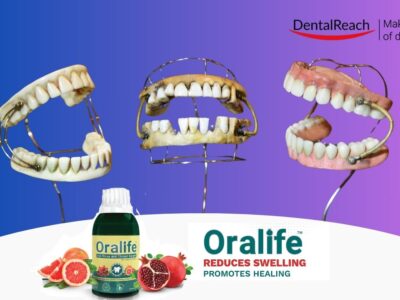– Dr Mriganka Sekhar Ghose
Introduction
Tobacco smoke contains over 4000 chemical compounds including tar, carbon monoxide, nicotine, hydrogen cyanide, acetone, ammonia, naphthalene, cadmium and polyvinyl chloride.
Tobacco is a known or probable cause of many diseases.
- Eyes: Macular degeneration
- Hair: Hair loss
- Skin:Ageing, wrinkles, wound infection
- Brain:Stroke
- Mouth & Pharynx: Cancer, gum diseases.
- Lungs:Cancer, Emphysema, Pneumonia
- Heart: Coronary Artery Disease
- Stomach:Cancer, Ulcer
- Pancreas:Cancer
- Bladder: Cancer
- Women:Cervical cancer, early menopause, irregular and painful periods
Not a single part of body is spared from the harmful effects of tobacco.
In India, tobacco is used in variety of forms, mainly smoking, chewing, placing, sucking, etc. The type of use of tobacco by the individual is dependent on many factors. Beedi smoking is the most popular form of tobacco smoking, followed by cigarette smoking. Oral use of smokeless tobacco is widely prevalent. The types of tobacco used are described below.
Types of Tobacco
- Beedis
- Cigarettes
- Cigars
- Chillum
- Hookah etc
SMOKELESS TOBACCO TYPES:
- Paan with supari (betel nuts)
- Paan masala
- Tobacco and slaked lime (Khaini) etc
TOBACCO PRODUCTS FOR APPLICATION:
- Mishri
- Bajjar
- Gud Haku
- Jarda tambaku
- Creamy snuff etc.
All the tobacco products are harmful and are associated with cancer.
Nicotine Addiction
Nicotine, a drug found naturally in tobacco, is an alkaloid from the nightshade family of plants (Solanaceae). It constitutes approximately 0.6-3.0 percent of dry weight of tobacco, with bio synthesis taking place in roots and accumulating in the leaves.
According to the American Heart Association,” nicotine addiction has historically been one of the hardest addictions to break.”
The pharmacological behavioral characteristics that determine tobacco addiction are similar to those that determine addiction to drugs, such as heroin and cocaine. Nicotine content in cigarette has actually slowly increased over the years.
Why Is It So Hard To Quit?
Nicotine is hard to quit, because it is highly addictive. In fact, it is as addictive as heroin and cocaine. Overtime, users become physically and psychologically dependent on nicotine.
Where Nicotine Goes & How Long It Stays?
Nicotine enters the blood stream from mouth and is carried out throughout the body. It affects many parts of the body including the heart, blood vessels, hormone metabolism and brain. During pregnancy, nicotine freely passes the placenta. Nicotine has been found in amniotic fluid and the umbilical cord blood of newborn infants.
Assessing Nicotine Dependence
Nicotine acts as an agonist ganglionic cholinergic receptor in both the peripheral and central nervous system and causes the releases of a number of neuro-transmitters including dopamine, nor adrenaline, acetylcholine and serotonin.
Nicotine affects the:
- Central Nervous System: A range of short term effects includes pleasure arousal, improved short term memory, improved concentration and decreased anxiety.
- Cardiovascular System: Increased heart rate & blood pressure & peripheral vasoconstriction.
- Endocrine System: Increased circulating catecholamines such as adrenaline and nor adrenalin and increased cortisol levels.
- Gastrointestinal System: Decreases apetite, nausea etc.
- Skeletal Muscles: Decreased tone.
Nicotine is absorbed from the respiratory tract, buccal mucosa & skin. There is minimal absorption through gastrointestinal tract when administered orally. Cigarettes are an effective carrier of nicotine.
Benefits Of Quitting Tobacco
- Blood pressure drops to normal.
- Pulse rate drops to normal.
- Carbon monoxide level in blood drops to normal.
- Chance of heart attack decreases.
- Ability to smell & taste is enhanced.
- Lung function increases.
- Risk of coronary heart disease reduces to half as compared to that of a regular smoker.
Oral Signs Of Tobacco Use
- Stained teeth
- Foul smelling breath(halitosis)
- Gum disease
- Loose teeth
- Discoloured patches on the mucosa, white red, dark precancerous lesions.
Dental surgeons can start Tobacco Cessation Programs (TCP) in their private dental practice since they are rightly, the ‘oral physicians’.
The 5 A’s in a TCP at a dental clinic
The 5 A’s are the evidence based framework for structuring tobacco cessation in a dental clinic.
The 5 A’s (Ask, Advise, Assess, Assist and Arrange) is a five to fifteen minutes research based counselling tool.
- Step 1: Ask – During every dental visit, systematically identify all tobacco users and document their tobacco status in the clinic system.
- Step 2: Advise – Strongly urge all tobacco users to quit by providing a clear message that quitting is important for their health. Use strong language to emphasize the importance of quitting, and personalize your message to tie tobacco use to the patient’s current health or illness, the social and economic cost of tobacco use, the motivation level/readiness to quit, or the impact of tobacco use on children or others in the household.
- Step 3: Assess – To determine a patient’s willingness to quit, ask every tobacco user if they are willing to make a quit attempt within a specified time frame, such as within the next 30 days. This will help you assess their readiness to quit and tailor your approach accordingly.Overall, these steps can help dental professionals effectively support tobacco cessation efforts with their patients and promote better health outcomes.
The stages of readiness to change model is a valuable model for assessing a person’s readiness to change a variety of behaviors. The stages may be :
- Not Ready (Precontemplation) :These tobacco users are not seriously considering quitting in the next 6 months. They generally see the positive aspects of tobacco and do not like to acknowledge the disadvantages or have been discouraged by failure in past attempts. Encourage them to think about his/ her tobacco use and invite them for any help. Offer them the written information about the benefits of quitting tobacco.
- Unsure (Contemplation) : These tobacco users are seriously considering quitting in the next 6 months. This group is particularly amenable to brief motivational interviewing. Provide them the written information about the benefits of quitting tobacco.
- Ready (Preparation) :These tobacco users are planning to quit in the next 30 days. This group is most likely to ask for help with quitting.
- Action: These are former tobacco users who have quit in the last 6 months. This is when the risk of relapse is highest with about 75-80% relapse occuring in this stage. This is the time where support and strategies to prevent relapse are especially important.
- Maintenance: These are tobacco users who quit over 6 months ago. The non tobacco use behavior is established and the threat of tobacco use gradually diminishes. The chances of relapse diminishes over time-only about 4% of those who quit for more than 2 years go back to tobacco use.
- Step 4-Assist (Willing to quit):
Aid the patient to quit. A 5 day plan to get ready to quit is given below. In tobacco users, the motivational stage must be utilized properly.
- Step5-Arrange (Schedule a follow up contact) :
Follow up visits after advice to quit has been shown increases the likelihood to successful long term abstinence. Follow up contact should occur soon after quit date, preferably during the first week. A second follow up contact is recommended within the first month.
Action during follow up contact:
- Congratulate on success.
- Review problems and progress.
- If tobacco use has occurred, review circumstances and elicit recommitment to total assistance.
- Remind patient that a relapse can be used as a learning experience.
- Assess pharmacotherapy use and problems.
- Encourage social support and use of support services.
- Help build motivation to reach the stage of readiness to try again.
A 5 day plan to get ready to quit
The first step to quitting is to decide to quit. Next, make an appointment with the dentist to discuss the options for treatment and to get a ‘quit date.’
—Quit date minus 5—
- List all the reasons to quit
- Tell your family, friends about your plan
- Stop buying cartons of beedis/cigarettes/smokeless tobacco
—Quit date minus 4—
- Pay attention to why and when to use tobacco
- Think new ways to relax
- Think new ways to holding something in mouth and in hand instead of tobacco
- Think of habits or routine you want to change
—Quit day minus 3—
- Make use of things you could do with the extra money you save
- Think whom to reach when you need help
—Quit day minus 2—
- Clean your clothes to get rid of smell of smoke
—Quit day minus 1—
- Think of a reward you will get for yourself after you quit
- Get your teeth cleaned (scaling and polishing) by the dentist
- Throw away all your tobacco products
—Quit day—
- Keep yourself busy
- Change your routine when possible
- Do activities which don’t remind you to use tobacco
Behavioral & Cognitive Therapy
Behavioral & cognitive therapy or strategies are mainly advised to deal with cravings while quitting tobacco. It is a short term focussed approach for helping dependent individuals become abstinent from drug abuse.
It is the most frequently evaluated psychosocial approach for substance use disorders. Have a strong level of empirical support. Attempts to help people:
- Recognize
- Avoid
- Cope
This therapy is validated & recommended for smoking cessation, can be used individually or with groups.
Some of the behavioral & cognitive strategies are as follows:
- Dealing with cravings
- Delay
- Deep Breathing
- Drink water
- Distract
2. Remember the 3R’s
- Remind
- Rehearse
- Reward
Role Of Dentists In The Community
- Dentists can serve as role models for their patients by abstaining from tobacco use or quitting successfully. The use of tobacco by dentists can be a significant obstacle when providing tobacco cessation counseling to their patients.
- Dentists can leverage their authority in the community to inform and educate people about the dangers of tobacco use. This includes promoting the need to curb tobacco use in public spaces, as well as implementing effective educational programs to teach children about the harmful effects of tobacco.
- Additionally, dentists can be effective advocates for tobacco control measures in their communities. By working collaboratively with public health officials, policymakers, and other stakeholders, dentists can help raise awareness about the dangers of tobacco and promote policies that reduce tobacco use and exposure.
Brief Intervention
Available evidence suggests that behavioral intervention for tobacco use conducted by oral health professionals incorporating an oral examination component in the dental clinic and community setting may increase tobacco abstinence rates among smokeless tobacco users.
Dental treatment often necessitates frequent contact with patients over an extended period of time, providing a mechanism for long term contact and reinforcement, coupled with visible changes in the oral cavity in response to counselling.
Cessation Plans Or Strategies
- Tapering (cutting) down (1 less cigarette today, 2 less tomorrow, etc)
- Cold Turkey (stop abruptly)
- Possibly a pharmacological method to assist with cessation.
Possible Support Persons:
- Close Friends
- Family
- Co-Workers
Tobacco Cessation Methods
Every tobacco user is unique and one cessation method will not work for everyone. Remember to let the patient chose the method that is suitable for them.
A. NON PHARMACOLOGICAL CESSATION STRATEGIES
- Tapering: Cut down the number of cigarettes/beedis smoked (or smokeless tobacco) each day until the patient find they are no longer using it. Tapering involves counting the number of cigarettes/beedis smoked each day and then reducing that amount by a fixed number over a given amount of time. This method involves setting a quit date by which patient will have tapered down to the point that they are no longer using tobacco.
- Cold Turkey: Abruptly stopping all smoking. Best for patients who smoke two packets of cigarettes a day or less.
B. PHARMACOLOGICAL METHODS
This includes
- Nicotine Replacement Therapy
- Bupropion
- Verenicline
Pharmacotherapy
- NICOTINE REPLACEMENT THERAPY (NRT):
Mechanism of action of NRT is thought to be thorough stimulation of nicotinic receptors in the central segmental area of the brain and consequent release of dopamine in the nucleus of acumens. All types of NRT viz,
- Nicotine patch
- Nicotine gum
- Nicotine inhaler and
- Nicotine nasal sprays
have been shown to have similar success rates. NRT is safe and should be recommended for smoking cessation.
DOSAGE OF NRT:
- During 1 to 6 weeks: Chew 1 piece of gum /lozenge every 1 to 2 hours
- During 7 to 9 weeks: Chew 1 piece of gum 2-4 hours
- During weeks 10 to 12: Chew one piece of gum every 4 to 8 hours
2. BUPROPION:
Bupropion is non-nicotine drug for treating tobacco dependence. It is a typical anti-depressant that has both, dopaminergic and adrenergic actions.
DOSAGE OF BUPROPION:
Bupropion, if needed should be taken for atleast 7 to 12 weeks.
- Day 1 to 3: 150 mg (1 tablet daily)
- Day 4-6 : 150 mg (twice daily)
- Day 7: 150 mg twice daily for 12 weeks.
Depending on the severity of nicotine addiction, patient can be treated with NRT ( if addiction is not more) or in combination with NRT + Bupropion (if addiction is severe).
Note: Bupropion SR should not be given to
- breastfeeding pregnant woman
- patients with seizures
- patients with severe hepatic cirrhosis
3. VERENICLINE:
It is a newer prescription medicine. It works by interfering with nicotine receptors in the brain. It helps to lessen the symptoms of nicotine withdrawal.
Withdrawal Symptoms
More than 80% of tobacco users will experience symptoms of nicotine withdrawal. Common symptoms and strategies to cope with nicotine withdrawal are as follows:
- Irritability: To cope with this, ask the patient to walk, take hot bath.
- Fatigue: To cope with this, ask the patient to take naps.
- Insomnia: To cope with this, ask the patient to avoid caffeine after 6 pm.
- Nasal Drip: To cope with this, ask the patient to drink plenty of fluids.
- Dizziness: To cope with this, ask the patient to change postures slowly.
- Depression: To cope with this, ask the patient do yoga, pranayama and exercises.
- Lack of concentration: To cope with this, ask the patient to plan work load and avoid stress as much possible.
- Constipation: To cope with this, ask the patient to add fiber in his or her diet.
- Craving for cigarettes: To cope with this, ask the patient to divert his or her attention to something else.
- Headaches: To cope with this, ask the patient to drink plenty of fluids.
Relapse Prevention
Relapse prevention strategies aim to assist people to avoid or cope with high risk smoking situations.
Try any of these while preventing relapse:
- Identify high risk tobacco use situations and try to avoid them as much as possible. Reduce the number of high risk situations encountered.
- Consider life style changes, waking up early, doing exercises, meditation etc.
To Conclude
Dental professionals can play a pivotal role in diagnosing and effectively managing tobacco dependence. Starting a tobacco cessation program in your private dental practice can help you in playing out this role beyond usual dentistry.
Reference: https://www.ncbi.nlm.nih.gov/books/NBK63948/





















Comments